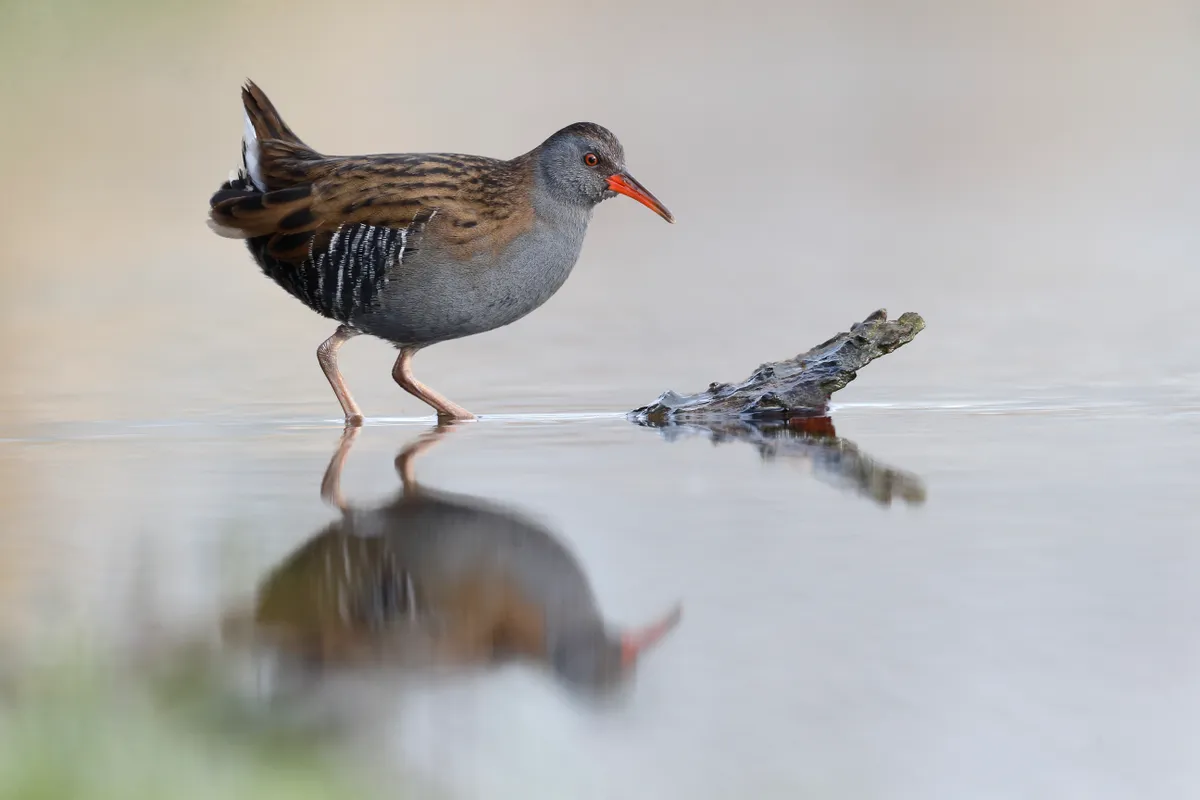The epitome of secretive birds, the water rail is much beloved by birdwatchers.
On the rare occasions when it comes into view, there is a delightful feeling of triumph and privilege. On the other hand, it isn’t so rare that you have no chance of seeing it; just visit a freshwater marsh at any time of year and you have a chance.
Interested in learning more about British wildlife? Check out our guides to ducks, wading birds and reptiles.
Rails, crakes and coots
The rail family includes moorhens, coots, water rails, corncrakes and spotted crakes. Find out more about these characterful birds with our spotter's guide.

What does a water rail look like?
Although the water rail – Rallus aquaticus – is easy to identify, photographs and illustrations tend to make it look more distinctive than it actually is. It really is easily overlooked among moorhens at the muddy edge of a reed bed, although once you see the long, red bill any doubt quickly disappears.
It is smaller than a moorhen and less bulky, and the body is, as typical with rails, flattened to the sides. This is an adaptation to running at speed through thick waterside vegetation, forests of reed stems for example. The water rail measures 23–26cm in size.

What rail call
One of the water rail’s most distinctive features is its unusual voice, which is loud and explosive, and often heard at night, and particularly in the spring. You might hear birdwatchers saying it resembles a grunting and screaming pig – and that’s because it does! There is an old name for the sound, too – “sharming”.
What does a water rail eat?
Water rails are unusual among rails for their varied diet and, while this includes many humdrum items such as seeds, snails and crustaceans, it also stretches to more exciting predatory behaviour. The water rail catches and kills small birds and mammals, stabbing them in the back of the head repeatedly in a burst of violence, like an offensive upright member of a community suddenly going rogue.

Water rail habitat
Although water rails are elusive and usually extremely nervous – tearing back into the reed beds at any sign of danger – they quite become habituated. In wetland nature reserves they may even forage below bird feeders for spilt grain, in plain sight.

Water rail distribution
Waterfalls are uncommon. There are 1,100 breeding pairs in the UK (10,000 in winter).
Please note that external videos may contain ads:
Water rail in spring/Credit: Wildlife World
